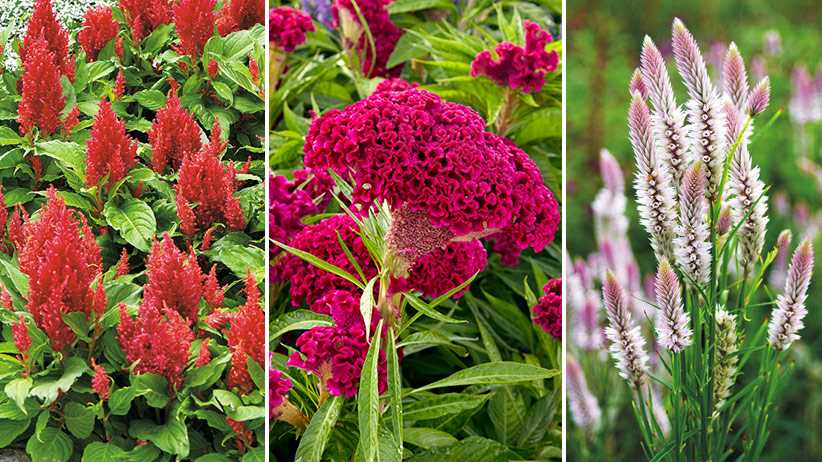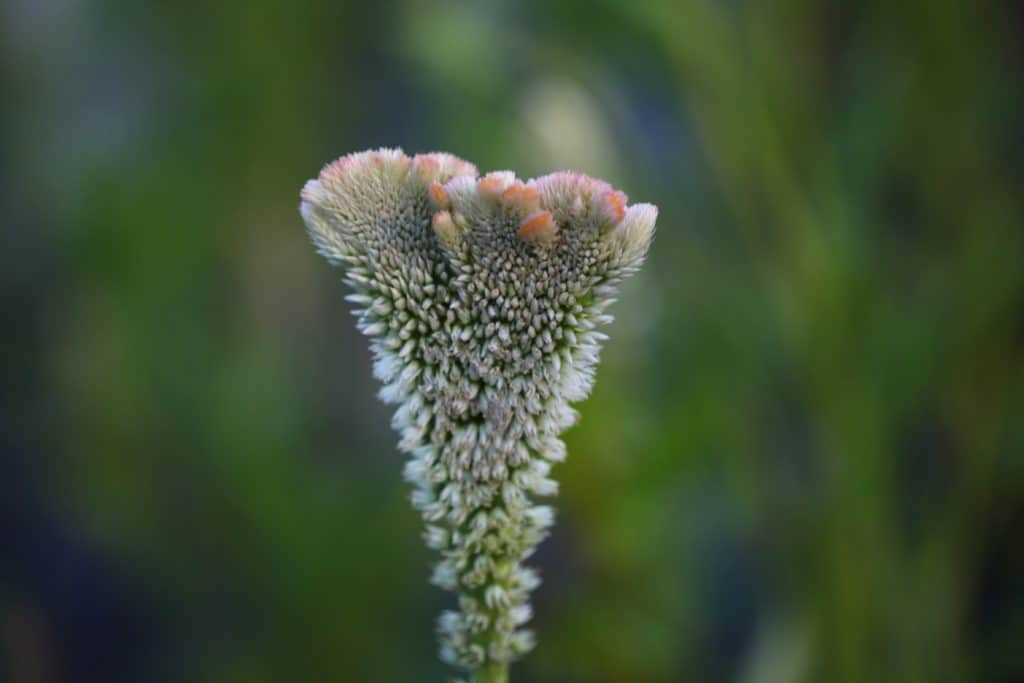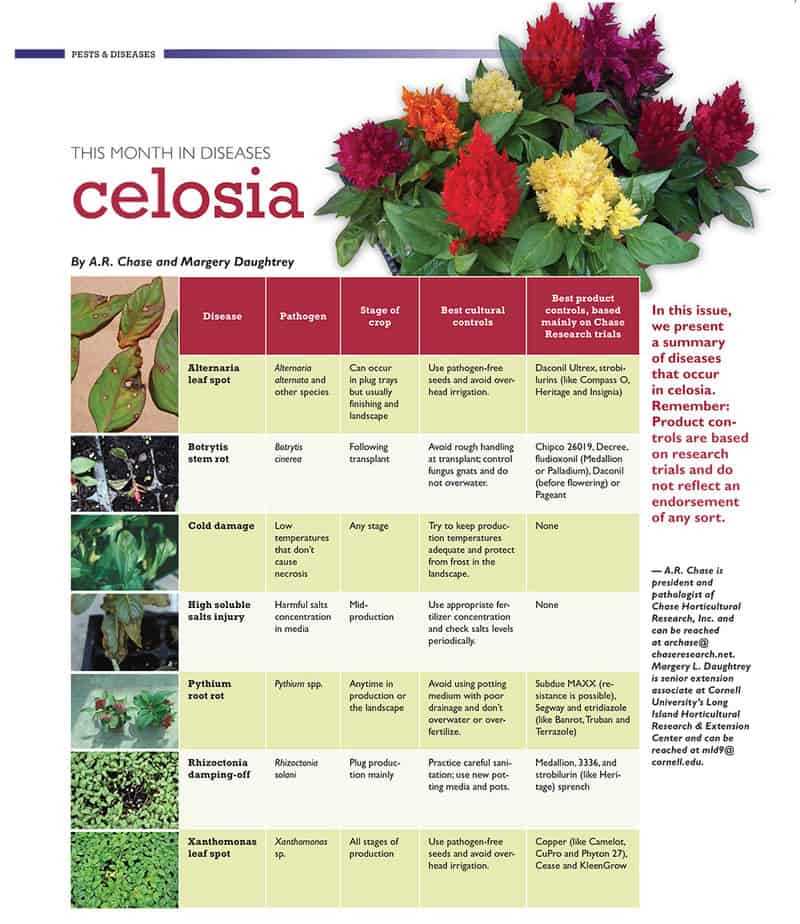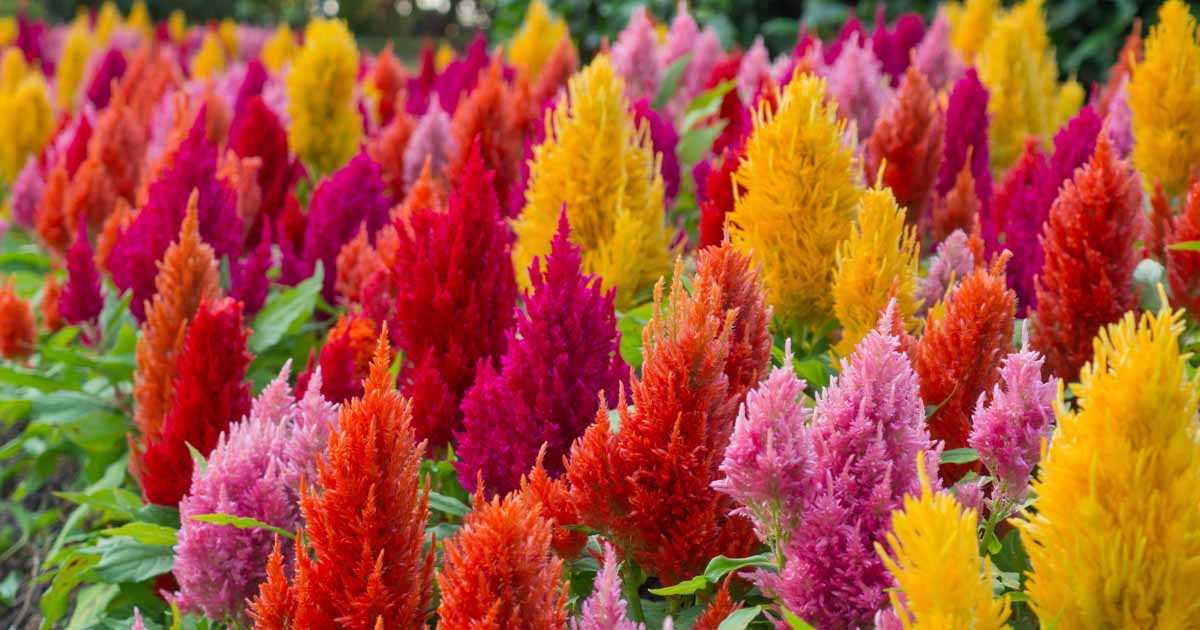- Choosing the Right Celosia Crested Variety
- Growth Habit
- Colors
- Size
- Duration of Bloom
- Weather Tolerance
- Location and Temperature Requirements for Celosia Crested
- Indoor Growing
- Outdoor Growing
- Temperature Considerations
- Soil Conditions for Growing Celosia Crested
- Well-draining Soil
- A Neutral to Slightly Acidic pH
- Fertilization
- Conclusion
- Watering Guidelines for Celosia Crested
- Fertilization Tips for Celosia Crested
- 1. Choose the Right Fertilizer
- 2. Feed Regularly
- 3. Avoid Overfertilization
- 4. Water After Fertilizing
- 5. Use Organic Alternatives
- 6. Monitor Plant Health
- Pest and Disease Prevention for Celosia Crested
- 1. Aphids
- 2. Spider Mites
- 3. Fusarium Wilt
- 4. Leaf Spot
- 5. Root Rot
- Pruning and Deadheading Celosia Crested
- Pruning
- Deadheading
- Harvesting and Storing Celosia Crested Seeds
- Questions and Answers:
- What is celosia crested?
- Where can I find celosia crested plants?
- Are celosia crested plants difficult to care for?
- How often should I water celosia crested plants?
- Can I grow celosia crested plants in containers?
- Videos: How To Care Celosia Flowers ,How To Grow Celosia From Cuttings
Celosia Crested is a popular and stunning ornamental plant known for its unique, brightly colored flowers and attractive foliage. Whether you’re a seasoned gardener or just starting out, this guide will provide you with invaluable tips for choosing and watering Celosia Crested to ensure successful growth and vibrant blooms.
When choosing Celosia Crested plants for your garden or indoor space, it’s important to select healthy specimens with sturdy stems and vibrant green leaves. Avoid plants with yellow or wilted leaves, as these are signs of poor health. Look for plants with full, compact growth and multiple flower buds, as this indicates a strong and robust plant that will continue to bloom for a longer period.
In terms of watering, Celosia Crested plants prefer a moderate amount of moisture. It’s crucial to strike a balance between not overwatering, which can lead to root rot, and not underwatering, which can cause the plant to become dehydrated. As a general rule, water the plants thoroughly when the top inch of soil feels dry to the touch. Be sure to use a well-draining potting mix and allow excess water to drain out of the bottom of the pot to avoid waterlogged soil.
Another important aspect of watering Celosia Crested is providing adequate humidity. These plants thrive in humid environments, so consider placing a tray of water near the plants or using a humidifier to increase moisture levels. Misting the leaves with water once or twice a day can also be beneficial, especially in dry indoor environments.
By choosing healthy plants and ensuring proper watering techniques, you can enjoy the beauty and vibrancy of Celosia Crested throughout the growing season. Follow these tips to create a thriving and eye-catching display of this remarkable plant in your garden or home.
Choosing the Right Celosia Crested Variety
When it comes to choosing a celosia crested variety for your garden, there are several factors to consider. The right variety will depend on your personal preferences and the specific conditions in your garden.
Growth Habit
Celosia crested plants come in various growth habits, including upright, spreading, and compact. Upright varieties are ideal for creating a focal point in your garden or for adding height to flower beds. Spreading varieties work well as groundcovers or in hanging baskets. Compact varieties are great for smaller gardens or for container gardening.
Colors
Celosia crested flowers come in a wide range of colors, including shades of red, orange, yellow, pink, and purple. Consider the existing color scheme in your garden and choose a variety that will complement it. You can also create an eye-catching display by planting different color varieties together.
Size
The size of celosia crested flowers can vary significantly. Some varieties have large, showy flowers, while others have smaller, more delicate blooms. Consider the overall scale of your garden and choose a variety that will fit in well with the other plants.
Duration of Bloom

Some celosia crested varieties have a longer blooming period than others. If you want a continuous display of color throughout the growing season, choose a variety that blooms for an extended period of time. If you prefer a shorter but more intense burst of color, opt for a variety with a shorter blooming period.
Weather Tolerance
Celosia crested plants can vary in their tolerance to different weather conditions. Some varieties are more heat and drought tolerant, while others prefer cooler temperatures and more moisture. Consider the climate in your area and choose a variety that will thrive in those conditions.
| Variety | Growth Habit | Colors | Size | Duration of Bloom | Weather Tolerance |
|---|---|---|---|---|---|
| Dragon’s Breath | Upright | Red | Large | Long | Heat and drought tolerant |
| Flamingo Feather | Spreading | Pink | Small | Medium | Tolerates heat and moderate drought |
| Cramer’s Amazon | Compact | Purple | Medium | Short | Heat and drought tolerant |
These are just a few examples of celosia crested varieties. There are many other options available, so take your time to research and choose the right variety that suits your garden’s needs. By selecting the right celosia crested variety, you can enjoy beautiful and vibrant flowers all season long.
Location and Temperature Requirements for Celosia Crested
Celosia Crested is a tropical plant that thrives in warm and sunny locations. It requires a minimum temperature of 70°F (21°C) to grow and should be planted in a spot where it can receive at least 6-8 hours of direct sunlight each day.
Indoor Growing
If you choose to grow Celosia Crested indoors, make sure to place it near a south-facing window or under grow lights that provide sufficient light intensity. The temperature should be maintained between 70-85°F (21-29°C) for optimal growth. Avoid placing the plant near drafts or vents, as they can cause fluctuations in temperature that may harm the plant.
Outdoor Growing
In outdoor settings, Celosia Crested can be planted in flower beds, borders, or containers. It is important to choose a location that offers full sun exposure and protection from strong winds. This plant is not tolerant of frost, so it should be planted after the danger of frost has passed. Regular watering and well-drained soil are essential for the plant’s health.
Temperature Considerations
Celosia Crested is most comfortable in temperatures between 70-85°F (21-29°C). Temperatures above 85°F (29°C) can cause the plant to wilt, so providing some shade during the hottest part of the day can help prevent heat stress. On the other hand, temperatures below 70°F (21°C) can slow down growth and may even result in the death of the plant if prolonged.
It’s important to monitor the weather conditions and protect the plant from extreme temperatures accordingly. Watering the plant during the early morning or late evening hours when temperatures are cooler can also help prevent water stress and improve overall plant health.
Soil Conditions for Growing Celosia Crested
Celosia crested, also known as cockscomb, is a vibrant and unique flowering plant that requires specific soil conditions to thrive. By providing the right soil conditions, you can ensure the health and success of your celosia crested plants.
Well-draining Soil

One of the most important soil conditions for growing celosia crested is well-draining soil. This plant does not like to sit in waterlogged soil, as it can lead to root rot and other issues. It’s best to choose a soil mix that is loose and well-draining, allowing excess water to flow freely.
Celosia crested plants thrive in soil that is rich in organic matter. Adding compost, aged manure, or other organic materials to the planting area will provide the plant with essential nutrients and improve the soil’s overall fertility. This will lead to stronger and healthier plants with vibrant blooms.
A Neutral to Slightly Acidic pH
The ideal pH range for growing celosia crested is neutral to slightly acidic. A pH level between 6.0 and 7.0 is optimal. You can test the pH of your soil using a soil testing kit or by sending a soil sample to a lab for analysis. If your soil is too acidic, you can add lime to raise the pH. If it’s too alkaline, sulfur or peat moss can help lower the pH.
Fertilization
Celosia crested plants benefit from regular fertilization to ensure they have access to the necessary nutrients. Before planting, it’s a good idea to mix a slow-release granular fertilizer into the soil. Additionally, a balanced liquid fertilizer can be applied every few weeks during the growing season to promote healthy growth and abundant blooms.
Conclusion
Growing celosia crested successfully requires providing the right soil conditions. Ensuring well-draining soil, rich in organic matter, a neutral to slightly acidic pH, and regular fertilization will help your celosia crested plants thrive and produce vibrant, eye-catching blooms.
Watering Guidelines for Celosia Crested
- Adjust watering according to soil moisture:
- Check the moisture level of the soil before watering.
- Stick your finger about an inch into the soil to test for dryness.
- If the soil feels dry, it’s time to water.
- Avoid overwatering as it can lead to root rot.
- Water deeply:
- Avoid shallow watering that only wets the surface.
- Use a hose or watering can with a nozzle that provides a gentle, even flow of water.
- Apply water until it reaches a depth of at least 6 inches.
- Water in the morning:
- Watering in the morning allows the plant to absorb moisture and dry off during the day.
- Avoid watering in the evening as it can create a damp environment that promotes disease.
- Monitor the weather conditions:
- Adjust the watering frequency based on the weather.
- In hot and dry conditions, the plant may require more frequent watering.
- In cooler or rainy weather, reduce the watering frequency.
- Use a mulch:
- Apply a layer of organic mulch around the base of the plant.
- Mulch helps to retain moisture in the soil and regulate temperature
- Avoid placing the mulch too close to the stem to prevent rot.
- Consider using irrigation systems:
- Irrigation systems, such as drip irrigation or soaker hoses, can provide more controlled and efficient watering.
- These systems can deliver water directly to the root zone, reducing water waste and minimizing the risk of fungal diseases.
Following these watering guidelines will help ensure the health and vitality of your Celosia Crested plants.
Fertilization Tips for Celosia Crested
Proper fertilization is key to ensuring the healthy growth and vibrant blooms of celosia crested plants. Follow these tips to give your celosia crested plants the nutrients they need:
1. Choose the Right Fertilizer
When selecting a fertilizer for celosia crested plants, choose a balanced formula that provides equal amounts of nitrogen, phosphorus, and potassium (NPK). Look for a fertilizer with an NPK ratio of 10-10-10 or 20-20-20. This will help promote strong root development, vigorous growth, and abundant blooms.
2. Feed Regularly
Celosia crested plants benefit from regular feeding throughout the growing season. Begin fertilizing when the plants are well-established and actively growing. Start with a slow-release granular fertilizer applied according to the package instructions. Repeat the application every 4-6 weeks to maintain a consistent nutrient supply.
3. Avoid Overfertilization
While it’s important to provide celosia crested plants with adequate nutrients, overfertilization can be detrimental. Too much nitrogen can result in excessive vegetative growth at the expense of flower production. Be sure to follow the recommended dosage on the fertilizer packaging and avoid applying more than the recommended amount.
4. Water After Fertilizing
After applying fertilizer, water the celosia crested plants thoroughly. This will help to distribute the nutrients into the root zone and prevent the fertilizer from burning the plants’ roots. Aim to keep the soil consistently moist, but not waterlogged, throughout the growing season.
5. Use Organic Alternatives
If you prefer to use organic fertilizers, there are several options available. Compost, well-rotted manure, and worm castings are excellent choices for providing slow-release nutrients to celosia crested plants. These organic alternatives also improve soil structure and fertility over time.
6. Monitor Plant Health
Regularly inspect your celosia crested plants for any signs of nutrient deficiency or excess. Yellowing or pale leaves, stunted growth, and poor flowering may indicate a nutrient imbalance. Adjust your fertilization practices accordingly and consult a gardening expert if necessary.
By following these fertilization tips, you can ensure that your celosia crested plants receive the right amount of nutrients to thrive and produce beautiful blooms throughout the growing season.
Pest and Disease Prevention for Celosia Crested
1. Aphids
Aphids are small insects that suck on the sap of plants, including celosia crested. They can quickly multiply and cause damage to the plant. To prevent aphids:
- Inspect your plants regularly for aphids.
- Remove any infested leaves or stems.
- Use insecticidal soap or neem oil to control aphid infestations.
2. Spider Mites
Spider mites are tiny pests that feed on the undersides of leaves, causing them to turn yellow and eventually die. To prevent spider mites:
- Maintain a high humidity level around your celosia crested plants.
- Regularly spray the plants with water to help deter spider mites.
- If infestations occur, use miticide or insecticidal soap to control the problem.
3. Fusarium Wilt

Fusarium wilt is a fungal disease that affects many plants, including celosia crested. It causes wilting, yellowing, and stunted growth. To prevent fusarium wilt:
- Plant your celosia crested in well-draining soil.
- Avoid overwatering, as the fungus thrives in damp conditions.
- If you notice signs of wilt, remove and destroy affected plants to prevent the spread of the disease.
4. Leaf Spot
Leaf spot is a common fungal disease that affects celosia crested. It causes dark spots on the leaves, eventually leading to leaf yellowing and drop. To prevent leaf spot:
- Avoid overhead watering, as wet leaves promote the spread of the fungus.
- Water at the base of the plants to keep the foliage dry.
- If leaf spot occurs, remove and destroy affected leaves to prevent further spread.
5. Root Rot

Root rot is a fungal disease caused by overly wet soil conditions. It affects the roots of plants, causing them to rot and eventually die. To prevent root rot:
- Ensure your celosia crested is planted in well-draining soil.
- Avoid overwatering and allow the top inch of soil to dry out between waterings.
- If you suspect root rot, gently remove the plant from its pot and inspect the roots. Trim away any rotting roots and repot the plant in fresh, well-draining soil.
Pruning and Deadheading Celosia Crested

Pruning and deadheading are important tasks to keep your celosia crested plants healthy and promote continuous blooming. Here are some tips on how to properly prune and deadhead your celosia crested:
Pruning
- When the celosia crested plants reach a height of about 6 to 8 inches, it’s time to prune them.
- Use clean and sharp pruning shears to make clean cuts.
- Start by removing any dead or damaged leaves and stems to improve airflow and prevent disease.
- Next, prune the plants to shape them and encourage branching. Cut just above a set of leaves to promote new growth.
- If your celosia crested plants become leggy or overgrown, you can also cut them back by one-third to promote more compact growth.
Deadheading
- Deadheading is the process of removing faded or spent flowers from the celosia crested plants.
- Regular deadheading not only keeps the plants looking tidy, but also encourages more blooms.
- Using your fingers or pruners, remove the faded flowers by cutting them just above a set of leaves or where the stem meets the main stem.
- Be careful not to damage the new buds or leaves while deadheading.
- Deadheading should be done regularly, as celosia crested plants produce flowers continuously throughout the blooming season.
By regularly pruning and deadheading your celosia crested plants, you can maintain their health, shape, and continuous blooming. It’s a simple task that can make a big difference in the overall appearance of your celosia crested plants.
Harvesting and Storing Celosia Crested Seeds
Harvesting the seeds from celosia crested plants is a simple process that can be done in just a few steps. Here’s how to do it:
- Allow the flower stalks of the celosia crested plants to fully mature and dry out on the plant. The flower stalks will turn brown and feel papery to the touch when they are ready.
- Cut the flower stalks from the plant using a pair of sharp scissors or pruning shears. Try to cut as close to the base of the plant as possible.
- Take the cut flower stalks and place them in a paper bag. Make sure to label the bag with the name and date of the plant.
- Hang the paper bag with the flower stalks in a cool, dry place, such as a basement or garage. Allow the flower stalks to continue drying for several weeks.
- Once the flower stalks are completely dry and brittle, gently shake the bag to release the seeds. The seeds will be small, dark, and resemble tiny pebbles.
- Remove any remaining plant debris or chaff from the seeds by gently blowing on them or using a small fan.
Now that your celosia crested seeds are harvested, it’s important to store them properly to ensure their viability for future planting. Here are some tips for storing the seeds:
- Place the cleaned seeds in an airtight container, such as a small glass jar or a seed envelope.
- Store the container in a cool, dry place, such as a refrigerator or a basement.
- Label the container with the name and date of the seeds for easy identification.
- Avoid exposing the seeds to moisture or extreme temperatures, as this can reduce their viability.
By following these simple steps for harvesting and storing celosia crested seeds, you can ensure a steady supply of seeds for future planting and enjoy the vibrant and unique blooms of this beautiful plant for years to come.
Questions and Answers:
What is celosia crested?
Celosia crested is a type of flowering plant that belongs to the Amaranth family. It is known for its unique and vibrant crested flower that resembles a rooster’s comb.
Where can I find celosia crested plants?
Celosia crested plants can be found at nurseries, garden centers, or even online. They are relatively common and popular among gardeners and flower enthusiasts.
Are celosia crested plants difficult to care for?
Celosia crested plants are generally easy to care for. They require well-draining soil, regular watering, and can tolerate both full sun and partial shade. They are also fairly resistant to pests and diseases.
How often should I water celosia crested plants?
Celosia crested plants should be watered regularly, to keep the soil evenly moist. The frequency of watering depends on the weather and the moisture levels in the soil. As a general guideline, they should be watered about once or twice a week.
Can I grow celosia crested plants in containers?
Yes, celosia crested plants can be grown in containers. It is best to use a well-draining potting mix and a container with drainage holes. Make sure to water them regularly and provide enough sunlight for healthy growth.







